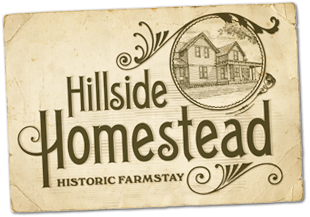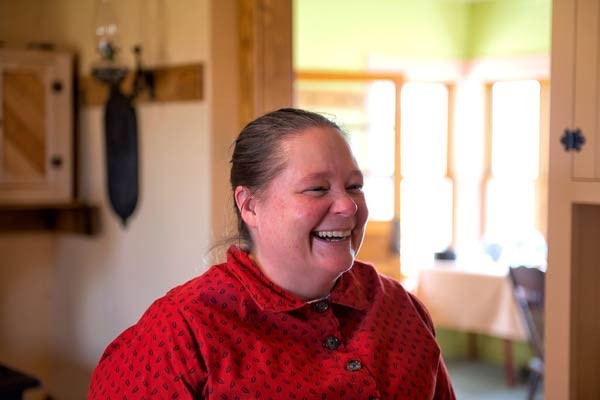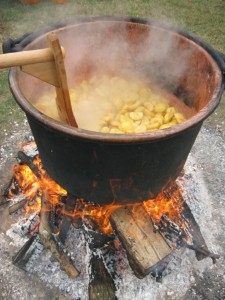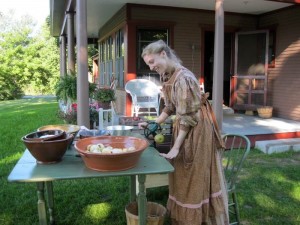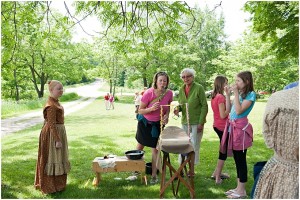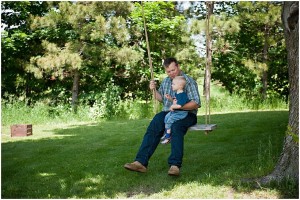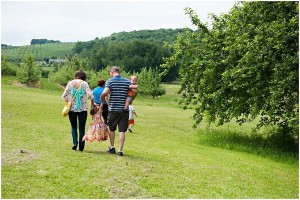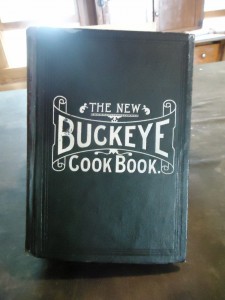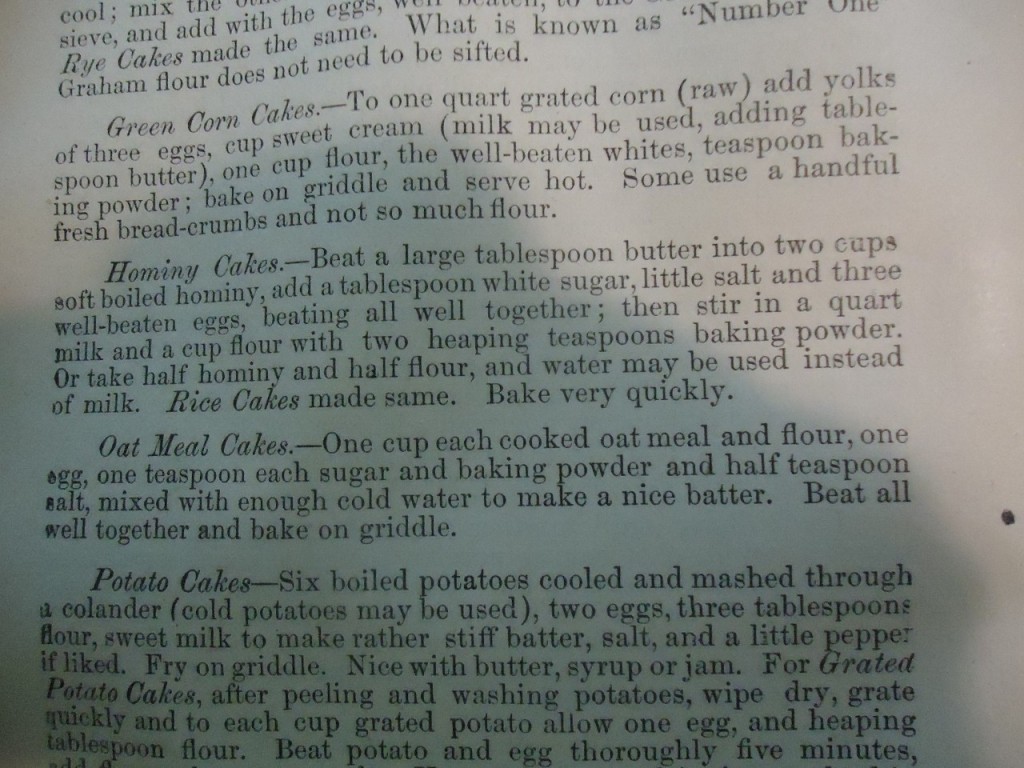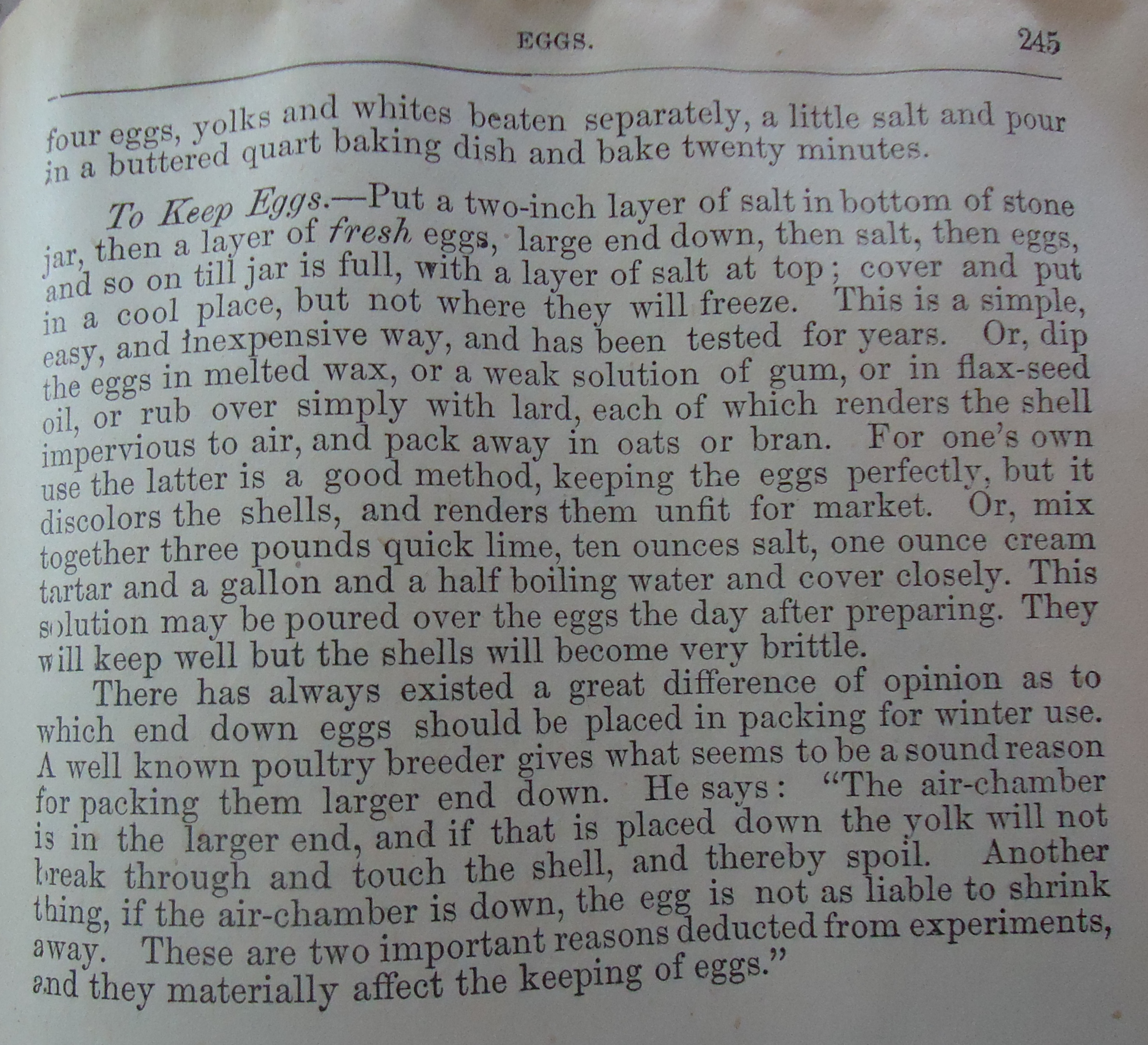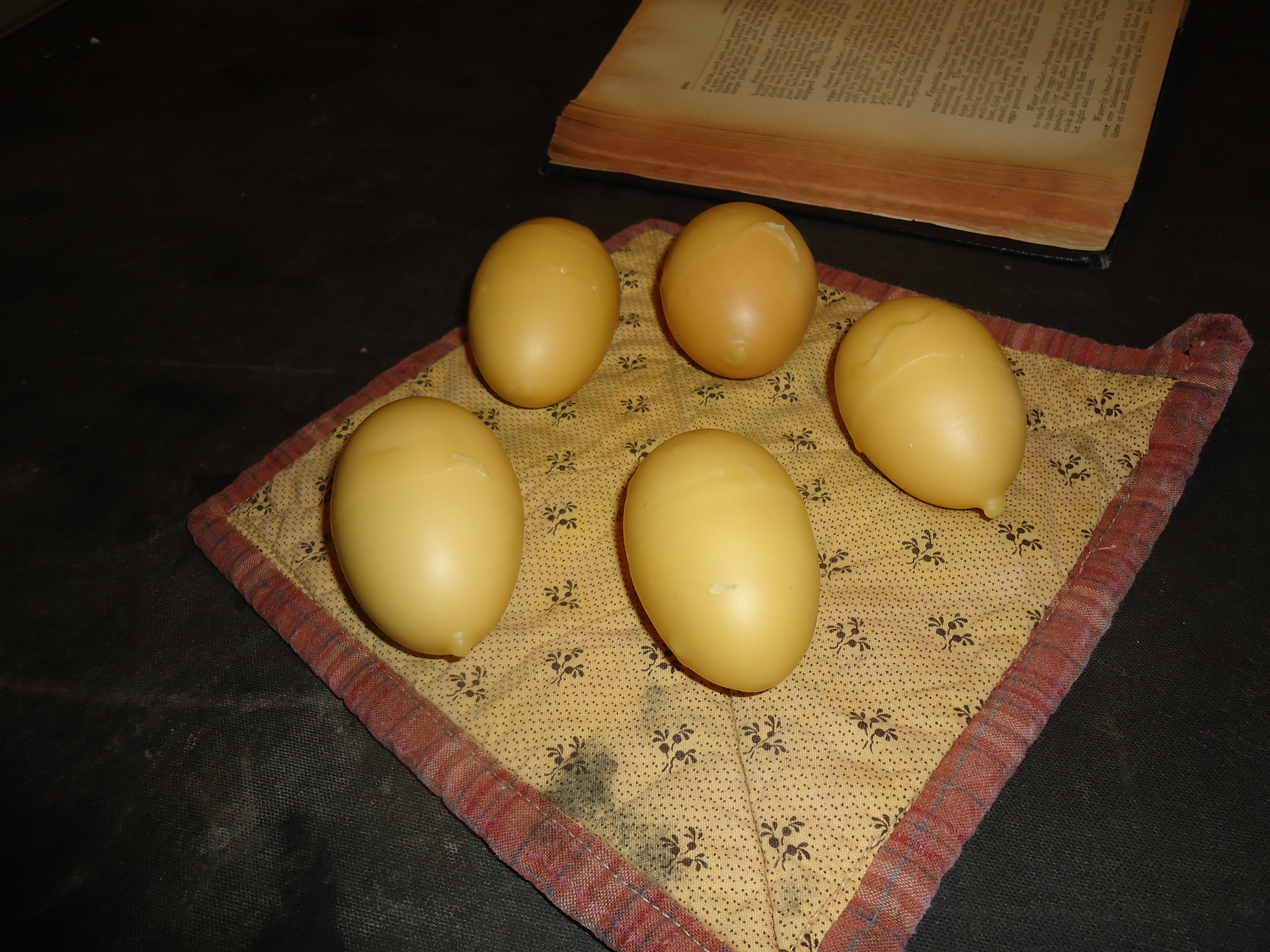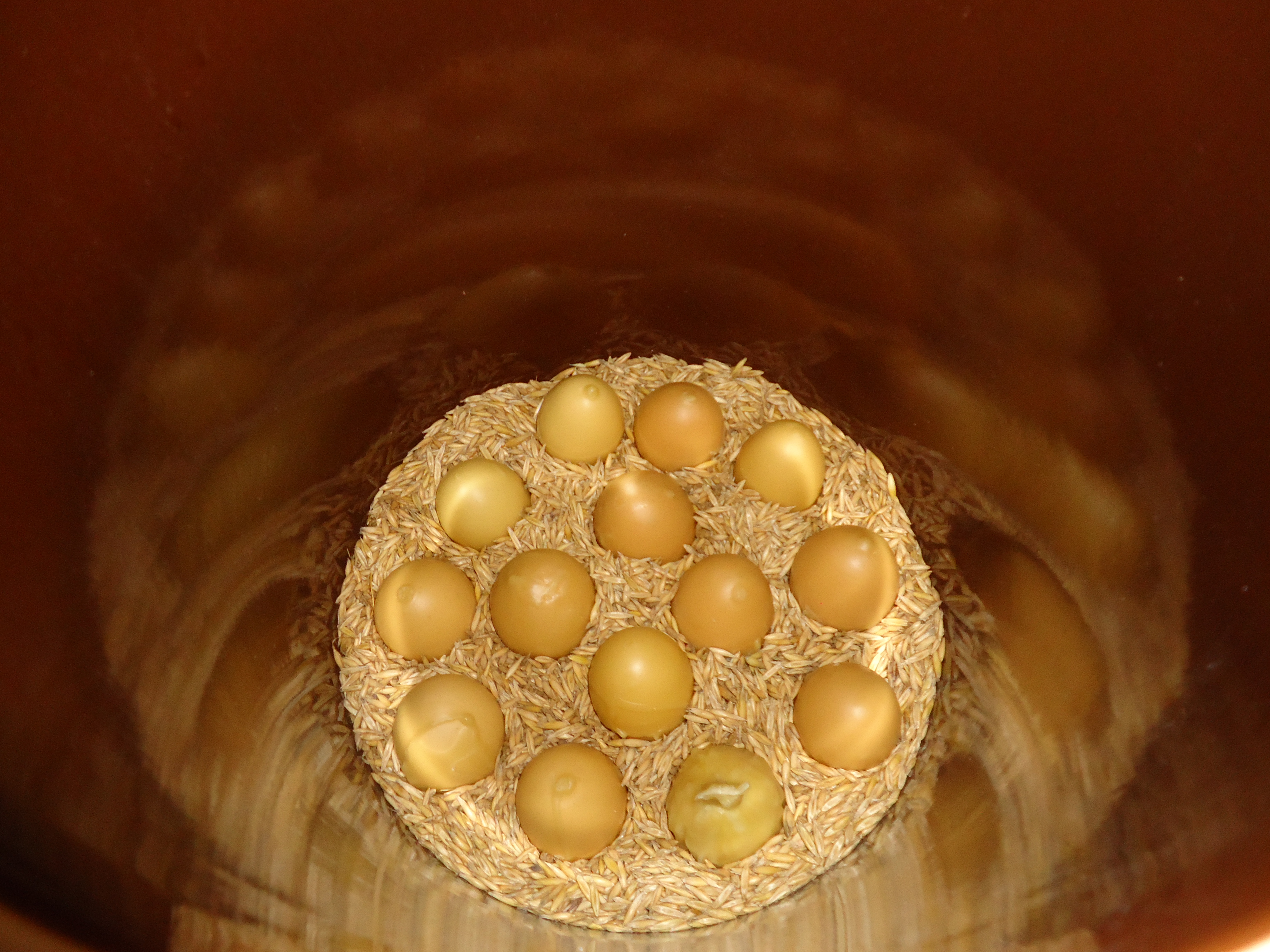On April 4, 2013 we, Maggie and I, coated four dozen of our hen’s fresh eggs in lard and stored them in a crock of oats. On May 16, 2013 we coated 3 dozen eggs in beeswax and stored them in another crock of oats. I wrote this blog post when we stored the eggs. This was done to preserve them from spring to winter. Fresh eggs are plentiful in the spring and on shortage in the winter.
Well it is winter time, so we opened up the egg crocks to see what we had! We had mixed results. Some of the eggs coated in bees wax had spoiled and I was afraid they tainted the whole crock. But the eggs coated in lard were good. I was a little disappointed, but not dismayed.
After some reflection on the results I think I understand why the waxed eggs went bad. I often took guests down cellar to show them the salt cured meats, the stored eggs and other intriguing food surprises that are to be found in our cellar.
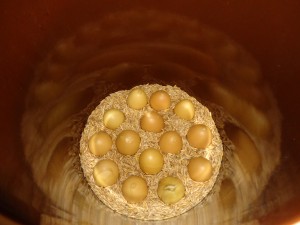
Eggs coated in bees wax stored big end down in a crock filled with oats. A common way to preserve eggs
I would open up the waxed egg crock, dig through the oats and pull out an egg to show. I even did some experimental techniques with the wax application; that involved wrapping the egg in tissue paper before dipping it in the wax. But I never opened the larded egg crock. I think my digging around in the waxed crock disturbed the eggs and exposed them to more temperature variation. And I think I found that my experimental waxing methods did not work. The larded eggs were just dipped in melted lard and cooled, no tissue paper.
As a test we fried one of the larded eggs. It did not taste very good, but I did not expect it too. Eggs are stored for baking purposes and not fresh eating. But we wanted to try it and we can report no ill effects.
Next we tried baking a cake. Maggie picked out a new recipe for Cocoanut Loaf Cake (365 Cakes and Cookies, published in 1904), which is like a pound cake with only eggs to leaven it, no baking powder or the like. We were very excited while it was baking and the results were amazing!!! The cake was delicious and the eggs had done just what they should do in the cake, raise it a bit, make it rich and lend a beautiful yellow color. The cake was baked yesterday (Nov 21, 2013) and we both ate some and can report we are in good health.
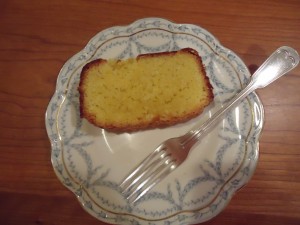
Cocoanut loaf cake made with eggs preserved with lard. Eggs put in storage on 4/4/13 and cake was baked on 11/21/13. Eggs more than 7 months in storage!
Now we have eggs to use for holiday baking!!! Good thing too because my chickens have not laid an egg since November 4!
Next year we will do the experiment again, another crock of larded eggs and another crock of waxed eggs. I will stick to the plain method of coating the eggs with the wax. I think both methods, waxed and larded, hold a lot of promise. Most important I will keep my hands out of the egg crocks during the storage period! Perhaps I should make a demo crock with fake eggs that I can share with guests!
Now of course this is not USDA approved so I can’t tell you to try it at home. But It does seem to hold some promise for me and Hillside Homestead!
So bring on the holidays; I’ve got eggs!
